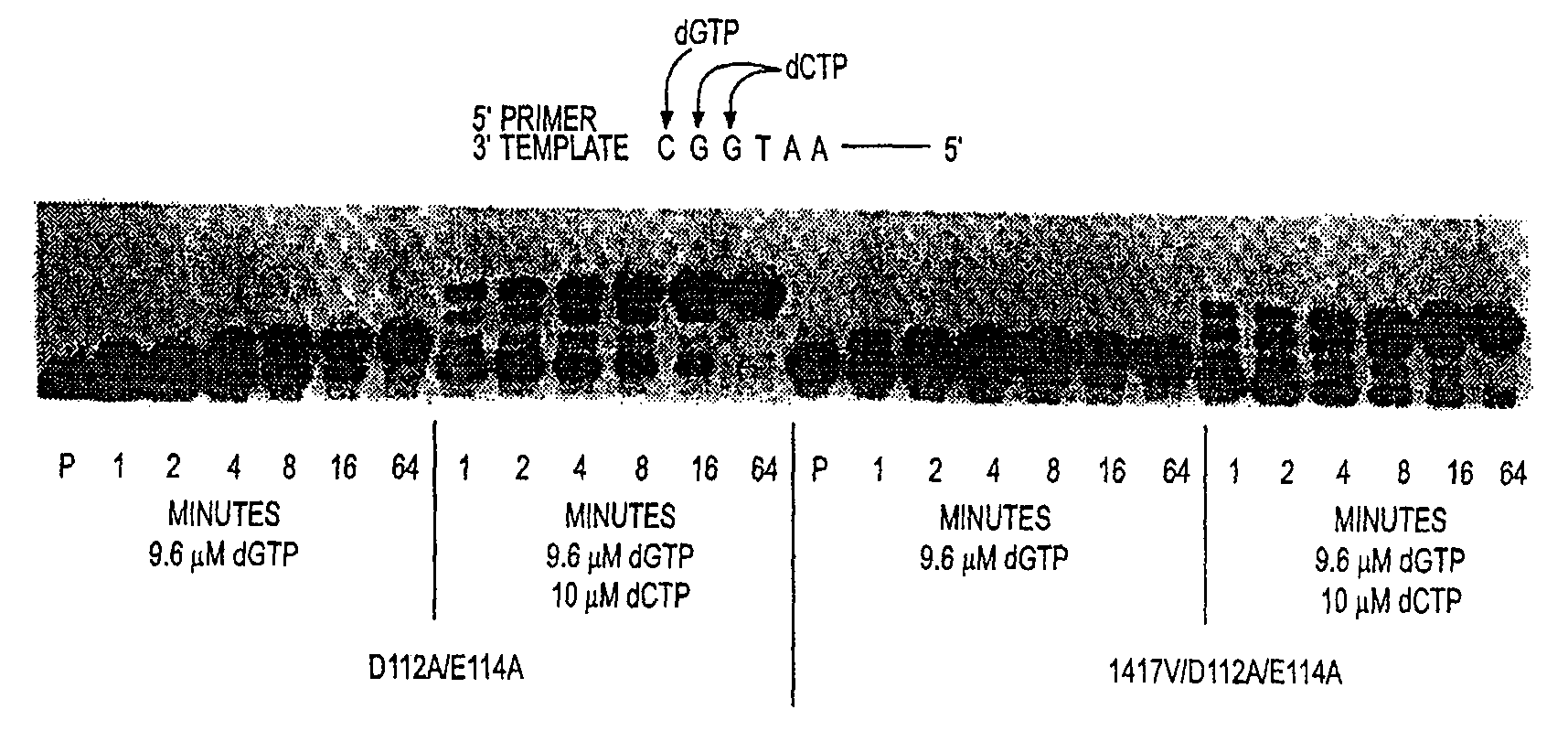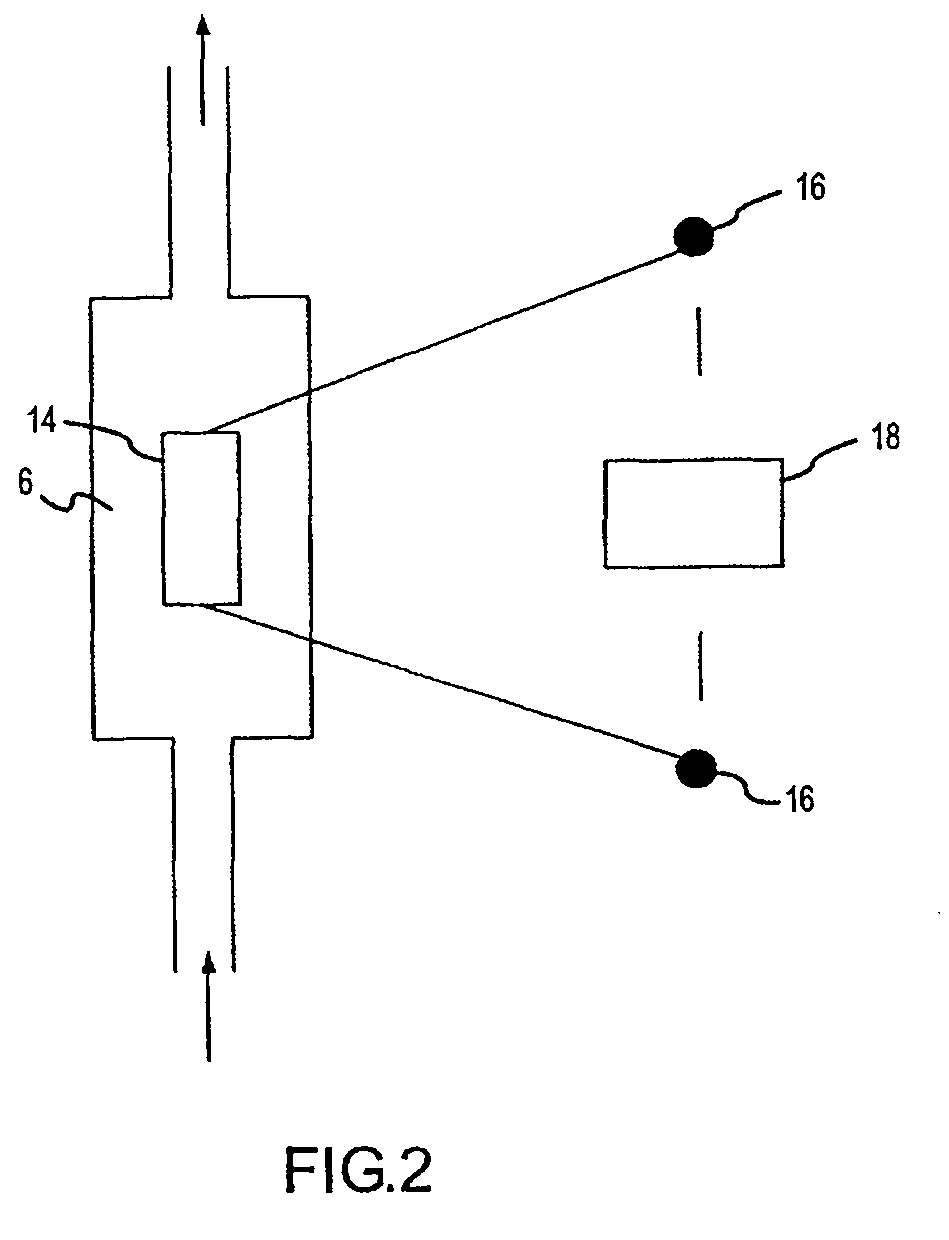Method of determining the nucleotide sequence of oligonucleotides and DNA molecules
a technology of oligonucleotides and nucleotide sequences, applied in the direction of transferases, instruments, directed macromolecular evolution, etc., can solve the problems of inability to detect and identify single nucleotide molecules, the method of sequencing based on gel electrophoresis readout becomes far too slow and expensive, and the problem of detecting and identifying single nucleotide molecules is enormous
- Summary
- Abstract
- Description
- Claims
- Application Information
AI Technical Summary
Benefits of technology
Problems solved by technology
Method used
Image
Examples
example 1
[0101]A microcalorimetic experiment was performed which demonstrates for the first time the successful thermal detection of a DNA polymerase reaction. The results are shown in FIG. 3. Approximately 20 units of T7 Sequenase was injected into a 3 mL reaction volume containing approximately 20 nmol of DNA template and complementary primer, and an excess of dNTPs. The primer was extended by 52-base pairs, the expected length given the size of the template. Using a commercial microcalorimeter (TAM Model 2273; Thermometrics, Sweden) a reaction enthalpy of 3.5-4 kcal per mole of base was measured (FIG. 3). This measurement is well within the value required for thermal detection of DNA polymerase activity. This measurement also demonstrates the sensitivity of thermopile detection as the maximum temperature rise in the reaction cell was 1×10−3 C. The lower trace seen in FIG. 3 is from a reference cell showing the injection artifact for an enzyme-free injection into buffer containing no templ...
example 2
[0102]To illustrate the utility of mutant T4 polymerases, two primer extension assays were performed with two different mutant T4 polymerases, both of which are exonuclease deficient. In one mutant, Asp112 is replaced with Ala and Glu114 is replaced with Ala (D112A / E114A). The exonuclease activity of this mutant on double-stranded DNA is reduced by a factor of about 300 relative to the wild type enzyme as described by Reha-Krantz and Nonay (1993, J. Biol. Chem. 268:27100-27108). In a second polymerase mutant, in addition to the DI12A / E114A amino acid substitutions, a third substitution replaces Ile417 with Val (I417V / D112A / E114A). The I417V mutation increases the accuracy of synthesis by this polymerase (Stocki, S. A. and Reha-Krantz, L. J, 1995, J. Mol. Biol. 245:15-28; Reha-Krantz, L. J. and Nonay, R. L., 1994, J. Biol. Chem. 269:5635-5643)
[0103]Two separate primer extension reactions were carried out using each of the polymerase mutants. In the first, only a single correct nucleo...
example 3
[0105]In accordance with the invention a fluorescent tag may be attached to the nucleotide base at a site other than the 3′ position of the sugar moiety. Chemistries for such tags which do not interfere with the activity of the DNA polymerase have been developed as described by Goodwin et al. (1995, Experimental Technique of Physics 41:279-294). Generally the tag is attached to the base by a linker arm of sufficient length to move the bulky tag out of the active site of the enzyme during incorporation.
[0106]As illustrated in FIG. 5, a nucleotide can be connected to a fluorophore by a photocleavable linker, e.g., a benzoin ester. After the tagged dNMP is incorporated onto the 3′ end of the DNA primer strand, the DNA template system is illuminated by light at a wave length corresponding to the absorption maximum of the fluorophore and the presence of the fluorophore is signaled by detection of fluorescence at the emission maximum of the fluorophore. Following detection of the fluoroph...
PUM
| Property | Measurement | Unit |
|---|---|---|
| temperature | aaaaa | aaaaa |
| temperature | aaaaa | aaaaa |
| temperature | aaaaa | aaaaa |
Abstract
Description
Claims
Application Information
 Login to View More
Login to View More - R&D
- Intellectual Property
- Life Sciences
- Materials
- Tech Scout
- Unparalleled Data Quality
- Higher Quality Content
- 60% Fewer Hallucinations
Browse by: Latest US Patents, China's latest patents, Technical Efficacy Thesaurus, Application Domain, Technology Topic, Popular Technical Reports.
© 2025 PatSnap. All rights reserved.Legal|Privacy policy|Modern Slavery Act Transparency Statement|Sitemap|About US| Contact US: help@patsnap.com



